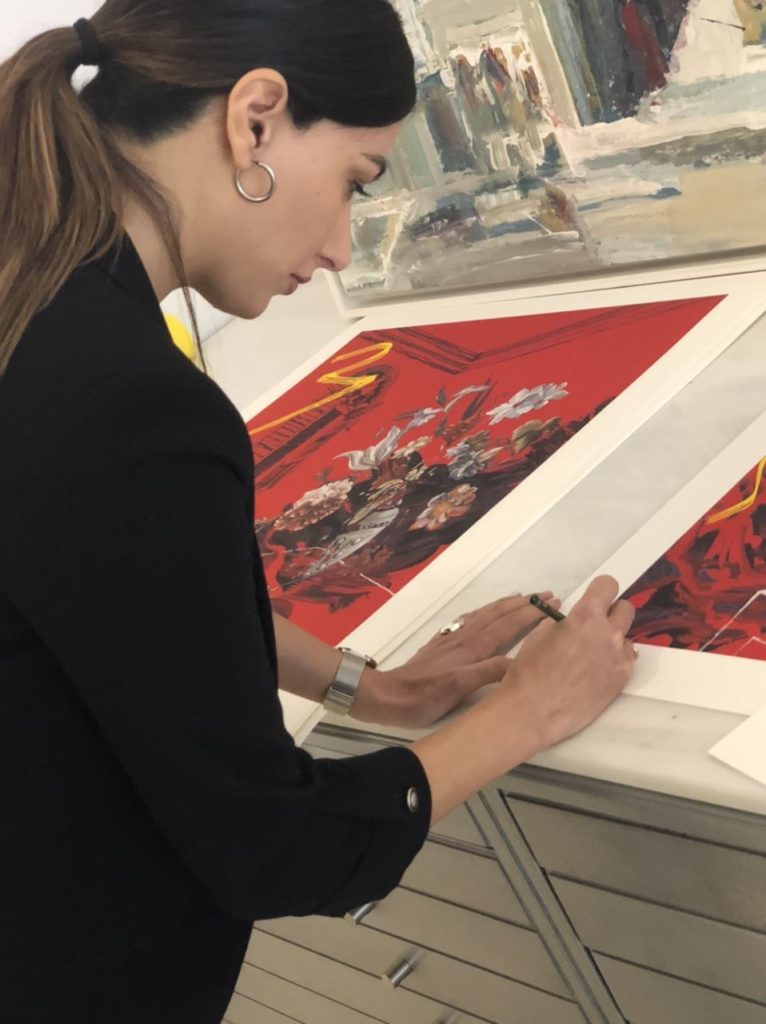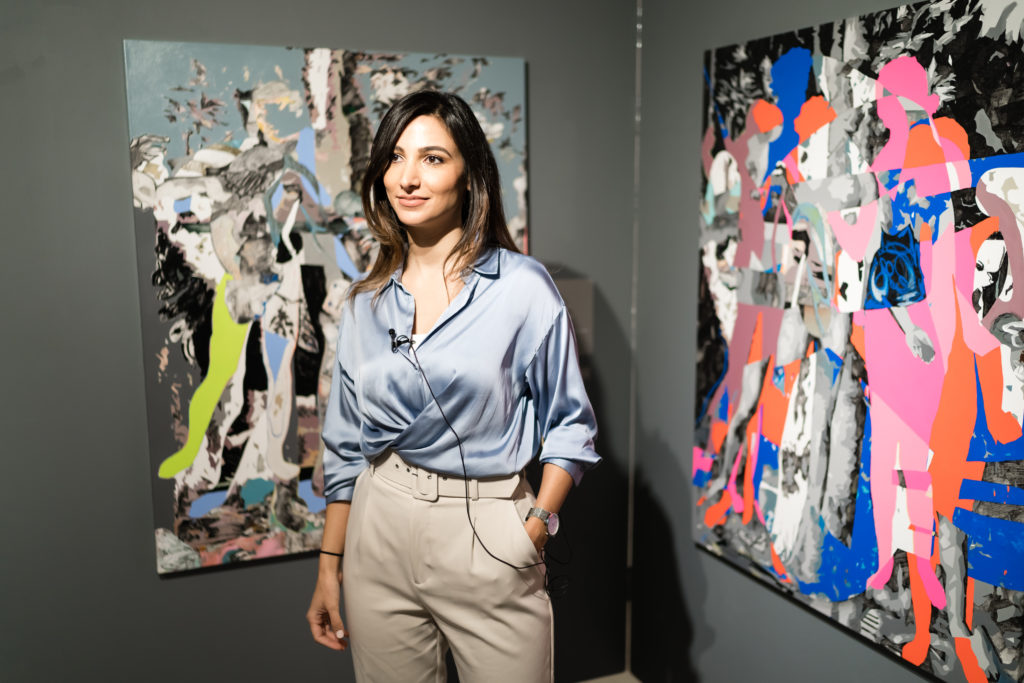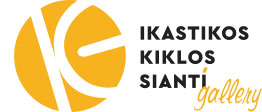Christina Papaioannou
Christina Papaioannou is a young upcoming painter from Thessaloniki, Greece. She has an Integrated Master’s degree from Athens School of Fine Arts, graduating from Triantafyllos Partaskidis’s and George Harvalias’s painting studio in 2014. Her work is in private collections and has been exhibited across Greece, Cyprus and in London. In 2019 she won the MATAROA prize for upcoming artists at 4th Art Thessaloniki International Contemporary Art Fair. In 2017 her work was published in International ArtMaze Magazine, Late Summer Issue #4. She collaborates with Ikastikos Kiklos Sianti Gallery, Athens.

EXHIBITIONS
2022 “Remedy”, Cream Athens, TAF / The Art Foundation, Athens
2022 6th Art Thessaloniki International Contemporary Art Fair, LOS Simi – Art Yacht Club
2022 Platforms Project, participation with Dogma Athens, Athens
2022 Art Athina, participation with Sianti Gallery, Zappeion Mansion, Athens
2022 “Summerish”, E Art Gallery, Paros Island
2022 “Art Your Pet”, curated by Manos Stefanidis, Sianti Gallery, Athens
2021 Art Athina Virtual, Sianti Gallery, Athens
2021 “Summer is back”, E Art Gallery, Paros island
2021 “Layers”, two-person exhibition, Marina Keas Gallery, Kea Island
2021 “Cycle-pursued…”, curated by Manos Stefanidis, Sianti Gallery, Athens
2021 “50 x 50 Less is More”, Sianti Gallery, Athens
2021 Platforms Project 2021, “Is the History of Art a history of violence?”, installation by Dipola Art Platform
2021 ROOMS2021, Kappatos Gallery, curated by Faye Tzanetoulakou, Athens
2020 Small paintings exhibition, Sianti Gallery, Athens
2020 Art Athina Viewing Rooms, virtual exhibition, Sianti Gallery, Athens
2020 “Tondo”, curated by Manos Stefanidis, Sianti Gallery, Athens
2020 “Blue after dark”, Sianti Gallery, Athens
2020 “I shall be your Eve”, four person exhibition, The Blender Gallery, Athens
2020 “L’art n’a pas de frontieres”, French Institute of Thessaloniki
2020 “Ballance in two dimensions”, Sianti Gallery, Athens
2020 “Today at GNA / # Hospital Art”, GNA 251, Athens
2020 “Lush Art in Austere Times”, Is Not Gallery, Nicosia, Cyprus
2019 “Anorioton – Object of the Imagination”, two person exhibition, J/M Gallery, Notting Hill, London
2019 Group exhibition, presented by Varvara Roza Galleries, La Galleria Pal Mal, Mayfair, London
2019 “Generations”, Contemporary Art Exhibition, DIPOLA Art Platform in collaboration with Lola Nikolaou Gallery, Municipal Art Gallery of Malevizi, Crete, Greece
2019 “Traces of a lifetime”, Contemporary Art Exhibition, House of Culture, Rethimno, Crete, Greece
2019 “CulturaHER2019”, Cultural Center of Heraklion, Crete
2019 “Affordable Art”, Lola Nikolaou Gallery, Thessaloniki
2019 “A beach in the city”, Sianti Gallery, Athens
2019 “Internal Body”, two person exhibition, Museum of Visual Arts of Heraklion, Crete
2019 “Lush Art in Austere Times”, Is Not Gallery, Nicosia, Cyprus
2018 “Small Paintings” group exhibition, Ikastikos Kiklos Sianti, Athens
 “In essence, the poet has one theme: his living body”
“In essence, the poet has one theme: his living body”
George Seferis, poet
The work of Christina Papaioannou presents us with such a rare proposition: a kind of painting (or should I dare say ‘post-painting’?) in which the integration of Digital and Painting aspects creates a newly born form. In my opinion, the fact that the ensuing artistic product does not lean towards either of those two elements, indicates the completeness of the integration itself. Papaioannou’s artistic process works like a blender, grinding together scattered references to Art History (with a prominent love for Durer’s engravings), countless painting styles (the coexistence of which, has long been an insurmountable artistic taboo), various interactive procedures (such as children’s paintings made by the artist’s pupils) and, of course, Pixels, videogames and the digital world. It goes without saying that, if all those obviously contradicting elements where to coexist in a lifeless way, they could easily become a postmodern extravaganza (nothing wrong with that). Yet, this is not the case here. Surging through the interference produced by the transmission of segmented images, the final result seems to have a special balance of its own, as if it preexisted as a form in its own right.

By chance? I wouldn’t think so…
Her composing methods are closely related to the 20th century collage legacy. Yet, in Christina Papaioannnou’s cocktail, the different elements (used in considerable abundance) are being dissolved. In the end, they remain fragments or scarps (detectable only by the acutest eye) of a world shattered through a process that we, as outsiders, cannot decode. I surely can’t, even though I am the one writing these words looking at the very works of the exhibition. I think the source of the enigmatic nature of Christina Papaioannou’s painting is an element of randomness – as I’m tempted to call it, although I very well know that it is not so. In reality, there’s nothing random about it since the artist is in full control of her creative means, from the start to the very end. But there is one element in this planetary collision of forms, shapes and references that does not allow, in my humble opinion, the implementation of any established aesthetic rules. Undoubtedly, the 20th century has already challenged all of them.
Yet, in my eyes, Christina Papaioannou’s painting has an eerie relation to the art of an alien civilization or, better yet, that of an Artificial Intelligence. What I just wrote may sound strange, but I honestly cannot express it in a better way. If I wasn’t acquainted with her (basically handmade) artistic procedure, I would be talking of Data Visualization in chaotic collision or an Iconic Rorschach Test invoking the viewer’s deepest fantasies or fears. The entire Art History – especially that of the non-representational art – could be conceived as a constant Rorschach Test. This psychological test presents the participant with symmetrical, but randomly created images. Most participants identify those shapes with images of their subconscious – their fears and desires. They usually imagine abstract shapes or forms but most of the times, even though these images are not the product of human intellect, they recognise human figures. This augmented role of the viewer can be applied (if it’s not already being applied) in painting, as well. It rests upon the viewer to interpret a work of art by letting his/her imagination free. When Jackson Pollock released the Wind- bag of Aeolus, he turned the whole artistic experience into a Rorschach Test, calling upon the viewers to either aesthetically admire an abstract work of art, or try to interpret and explain it. The most recent effort of stretching this notion of randomness, was made by Damien Hirst. In my opinion, Christina Papaioannou’s painting takes the viewer’s self-psychoanalytic process to an even higher level (as gamers would put it).
Thanasis Moutsopoulos
